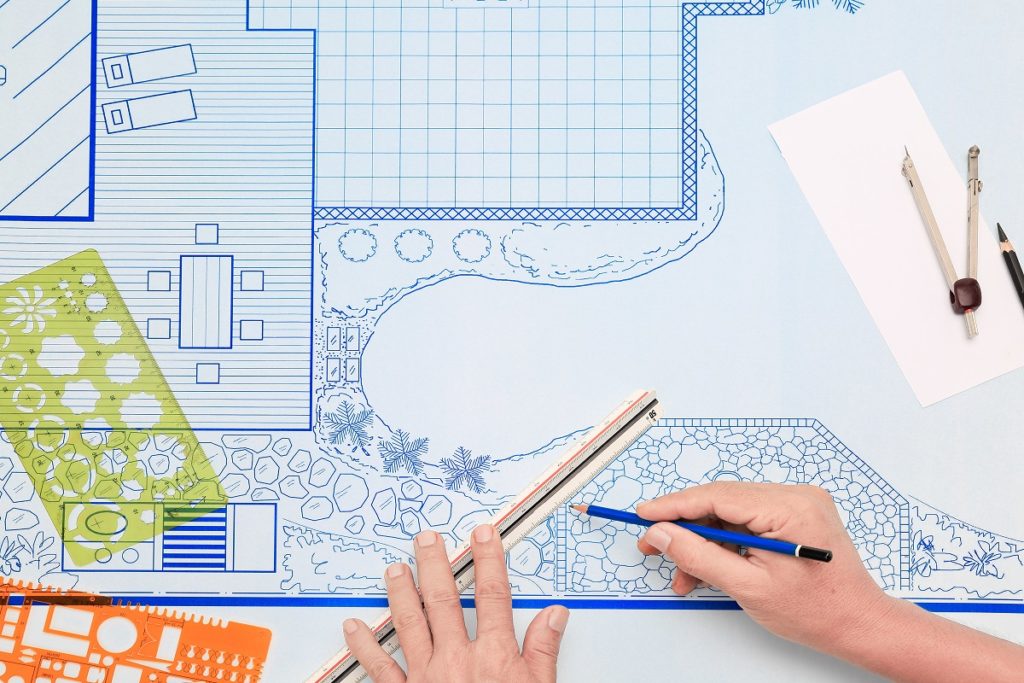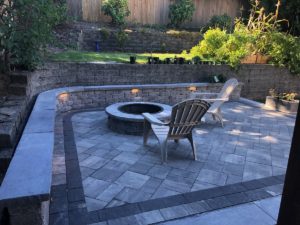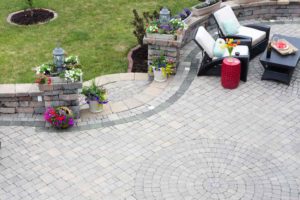
You may be sitting outside, enjoying a cool glass of lemonade and thinking your backyard looks messy. Or something doesn’t seem quite right. Don’t panic! Ninety percent of the time, it simply has to do with the design and flow of your garden. And getting the backyard of your dreams is as easy as pie!
It is not simply about good design. It’s about understanding the flow and unified character of your backyard. In order to achieve this, most use the principles of backyard landscape design as guidelines. They help shape vague concepts and intuitive knowledge into more specific and actionable landscaping choices.
7 Principles Of Design To Follow For A Beautiful Backyard
Simplicity
The minimalists have got it right. Simplicity is key – especially if your garden feels messy and disorganized. In this case, you may be missing two things: simplicity and repetition.
By repeating features or plants throughout your garden, you can create the illusion of simplicity while still maintaining flow. Instead of having many features and varieties of plants, hunker down to a few specific ones.
A simple garden defines the design while allowing you to enjoy it. Plus, it’s easy to maintain!
Variety
Just because you’re opting for simplicity, doesn’t mean you can’t have some variety. In fact, by making use of some diversity, you can create a visually stunning garden. Variety within simplicity is making use of unique shapes, sizes, and forms in order to create depth.
When brainstorming how to bring this design element into your backyard, do your research beforehand. This helps you understand exactly what you want to do in your garden and you will be able to visualize better.
Balance
Although this may be considered one of the more challenging design elements to perfect, balance is so important. Balance brings a certain level of sophistication to a garden.
When putting together your garden, each element carries a visual weight. There are two ways of achieving balance. Formal and informal.
Formal balance is when both sides of your garden mirror each other. This could be a very fun design to put together, it is also timeless in its classic, symmetrical style.
Informal balance is when the visual weight of your backyard is evened out with various different unmatching elements. Although this may take a bit more time, and a keener key, the results are beautiful and more organic.
Emphasis
Emphasis is like the punctuation of a garden – absolutely vital for a well-rounded off sentence. Another way of looking at emphasis is focal points.
By incorporating focal points in your garden, like a water feature or a fire pit, you give space for people’s eyes to rest. Moreover, these points can enhance the rest of the backyard by providing elements that the rest of your yard can be shaped around.
However, you don’t want to have too many points of focus, as this can create a cluttered and chaotic space.
Sequence
Sequence refers to how one element in your garden flows to the next. In architecture, they call this the regulating line. It is the existence of imaginary lines that connect and organize a design.
A line of sequence creates a sense of unity within a garden that allows all the other design principles to flow better. If you want to achieve flow in your garden, this is key to your initial design plan.
Abrupt changes in your garden will undoubtedly make it feel unbalanced. For example, growing small shrubs next to tall plants creates an abrupt change in flow and sequence.
Slowly transitioning from small plants to tall ones, on the other hand, gives a sense of satisfying flow.
Proportion
Proportion and balance lie very close to one another. Balance focuses on the size and weight of visual elements. Proportion focuses on the visual relationships between the sizes of different elements and how they fit into the landscape.
For instance, when planning out the sequence within your garden, you want to ensure the proportions are planned and balanced. Awkward proportioning will undoubtedly break the flow of your garden. For instance, you don’t want one huge tree in the middle of a flat garden with short shrubbery.
Unity
At the end of the day, unity ties up all the principles under one roof.
As visually interesting and well-thought-out your backyard is, you know you’re doing right when it appears unified. There is a sense of togetherness throughout your garden that wasn’t there before.
To help connect everything together, you can use walkways, retaining walls, or repetitive elements.
Conclusion
The seven backyard landscape design principles give you the perfect guidelines on how to create a beautiful backyard landscape. However, it may still be daunting. It’s always useful to call in a professional for a second opinion. And then? Enjoy a cool fresh glass of lemonade in your picture-perfect garden!





